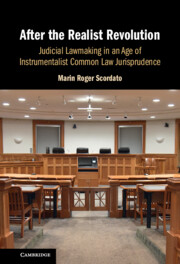Refine search
Actions for selected content:
168 results
Chapter 11 - Duty of care, skill and diligence
-
- Book:
- Contemporary Australian Corporate Law
- Published online:
- 11 September 2025
- Print publication:
- 25 September 2025, pp 347-382
-
- Chapter
- Export citation
Chapter 14 - Members’ rights and remedies
-
- Book:
- Contemporary Australian Corporate Law
- Published online:
- 11 September 2025
- Print publication:
- 25 September 2025, pp 446-492
-
- Chapter
- Export citation
6 - Aboriginal Land Rights in Australia
- from Part II - Australia, Canada, and New Zealand
-
-
- Book:
- Land Rights Now
- Published online:
- 06 September 2025
- Print publication:
- 25 September 2025, pp 119-148
-
- Chapter
-
- You have access
- Open access
- HTML
- Export citation
13 - Legal Privileges and the Effective Recognition of Indigenous Land Rights
- from Part III - Africa and Asia
-
-
- Book:
- Land Rights Now
- Published online:
- 06 September 2025
- Print publication:
- 25 September 2025, pp 280-309
-
- Chapter
-
- You have access
- Open access
- HTML
- Export citation
1 - Punishment Is Part of Tort Law
- from Part I - The Place of Punishment in Torts
-
- Book:
- Torts and Retribution
- Published online:
- 09 August 2025
- Print publication:
- 28 August 2025, pp 21-49
-
- Chapter
- Export citation
Reforming the Duty of Disclosure: The Emerging Shift Towards Consumer Protection in Contemporary Insurance Law
-
- Journal:
- European Journal of Risk Regulation , First View
- Published online by Cambridge University Press:
- 26 August 2025, pp. 1-15
-
- Article
-
- You have access
- Open access
- HTML
- Export citation
5 - Restraint of Trade in Professional Tennis
- from Part 1 - Contractual
-
-
- Book:
- Professional Tennis and Transnational Law
- Published online:
- 07 August 2025
- Print publication:
- 21 August 2025, pp 88-104
-
- Chapter
-
- You have access
- Open access
- HTML
- Export citation
1 - Tudor State, Chartered Companies and Colonization
-
- Book:
- Land, Law and Empire
- Published online:
- 01 September 2025
- Print publication:
- 07 August 2025, pp 9-34
-
- Chapter
- Export citation
1 - Introduction
-
- Book:
- After the Realist Revolution
- Published online:
- 02 May 2025
- Print publication:
- 22 May 2025, pp 1-3
-
- Chapter
- Export citation
2 - The Traditional Understanding of Lawmaking by Appellate Courts
-
- Book:
- After the Realist Revolution
- Published online:
- 02 May 2025
- Print publication:
- 22 May 2025, pp 4-10
-
- Chapter
- Export citation

After the Realist Revolution
- Judicial Lawmaking in an Age of Instrumentalist Common Law Jurisprudence
-
- Published online:
- 02 May 2025
- Print publication:
- 22 May 2025
7 - Adaptation of Tort Law to Modern Health Care Delivery in the Restatement of Medical Malpractice
- from Part II - Tools of Private Law
-
-
- Book:
- Health Law as Private Law
- Published online:
- 16 March 2025
- Print publication:
- 27 March 2025, pp 85-95
-
- Chapter
-
- You have access
- Open access
- HTML
- Export citation
17 - Papal Law in the English Church: Post-Reformation Anglican Jurisprudence
- from Part III - Canon Law
-
-
- Book:
- The Cambridge History of the Papacy
- Published online:
- 28 February 2025
- Print publication:
- 20 March 2025, pp 442-465
-
- Chapter
- Export citation
11 - The Right to Freedom of Thought in the United Kingdom
- from Part III - Europe
-
-
- Book:
- The Cambridge Handbook of the Right to Freedom of Thought
- Published online:
- 06 March 2025
- Print publication:
- 13 March 2025, pp 135-151
-
- Chapter
- Export citation
“Grant him quickly to my longing eyes”: The evolution of the US common law of sepulchre and its potential utility in interpreting the protection of the dead under IHL
-
- Journal:
- International Review of the Red Cross , First View
- Published online by Cambridge University Press:
- 03 March 2025, pp. 1-24
-
- Article
-
- You have access
- Open access
- HTML
- Export citation
Chapter 6 - Dutch Resistance to Emancipation and the Negotiations to End Slavery in New York
-
- Book:
- The Slow Death of Slavery in Dutch New York
- Published online:
- 20 December 2024
- Print publication:
- 09 January 2025, pp 174-207
-
- Chapter
- Export citation
3 - Environmental Constitutionalism
- from Part I - Comparing Climate Policies
-
-
- Book:
- Implementing Climate Change Policy
- Published online:
- 22 November 2024
- Print publication:
- 05 December 2024, pp 47-66
-
- Chapter
- Export citation
1 - The Object of Inquiry
- from Part I - The Historical and Conceptual Foundations of the Competition–Democracy Nexus
-
- Book:
- Competition Law and Democracy
- Published online:
- 21 November 2024
- Print publication:
- 28 November 2024, pp 13-52
-
- Chapter
- Export citation
4 - Multiple wrongdoers
- from Part 1 - General principles of compensation
-
- Book:
- Remedies in Australian Private Law
- Published online:
- 25 October 2024
- Print publication:
- 12 November 2024, pp 122-142
-
- Chapter
- Export citation
1 - Introduction
-
- Book:
- Remedies in Australian Private Law
- Published online:
- 25 October 2024
- Print publication:
- 12 November 2024, pp 1-22
-
- Chapter
- Export citation
